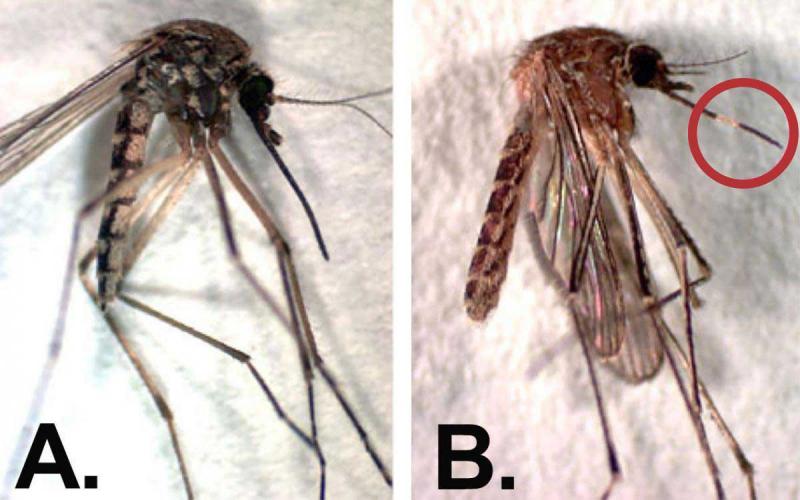
Originally Submitted: June 8, 2021
Although it may seem like mosquitos won’t be an issue this year due to drought conditions, it is important to remember that they don’t require large bodies of water to reproduce. Mosquitos can utilize standing bodies of water, small puddles or even stagnant water in containers or old tires. One good rule of thumb is to try to minimize potential water sources for mosquitos around your home and yard, which in turn can reduce mosquito populations.
There are over 20 species of mosquitoes that call South Dakota home, and only two species that account for the majority of observed populations. In South Dakota, a trapping network is used to monitor mosquito populations and determine when treatments are necessary in populated areas. The historical and recent data from these traps indicate that the two most commonly observed species are Aedes vexans (Figure 1-A) and Culex tarsalis (Figure 1-B). While both of these mosquito species are capable of transmitting West Nile Virus (WNV) to humans, Culex tarsalis poses a greater threat as a vector. This is due to its habit of feeding on birds, which are the primary vertebrate hosts of WNV. Aedes vexans demonstrates a higher preference for humans but rarely feed on bird hosts.

At first glance the two mosquitos might seem pretty similar in appearance, but there are some key characteristics that can be used to distinguish them. Culex tarsalis has a white band present on the middle of the proboscis (Figure 1-B). Aedes vexans has a pointed tip of the abdomen (Figure 2-A) whereas C. tarsalis has a blunt-broad ended abdomen (Figure 2-B).
To reduce the chances of contracting WNV, it is important to understand the behavior of the mosquito vectors. Aedes vexans is known to search for human hosts during both day and night; however, the majority of its activity occurs at night. Culex tarsalis is a nocturnal feeder with the greatest risk of bites occurring between dusk and dawn. Therefore, the risk of WNV infection can be greatly reduced by limiting outdoor activities between dusk and dawn. If you are outside after dark, make sure to cover as much of your skin as possible by wearing long sleeves and pants. Use insect repellants that contain DEET or similar active ingredients to provide further protection. The U.S. Environmental Protection Agency website has a helpful tool for choosing a repellant that will provide the best protection based on the desired activities.


